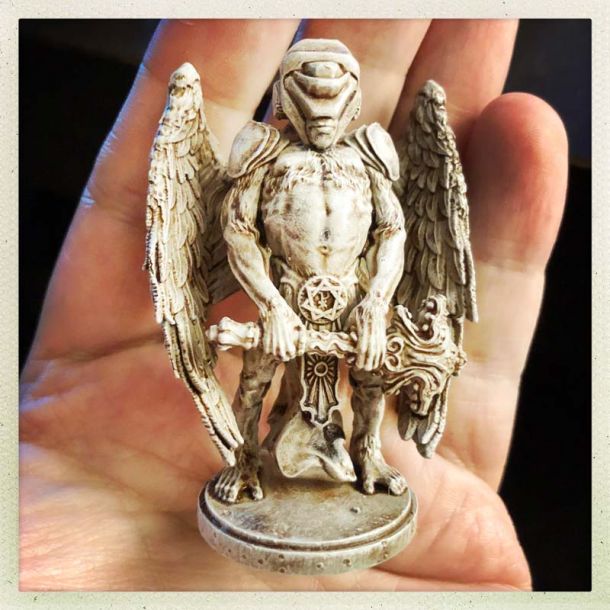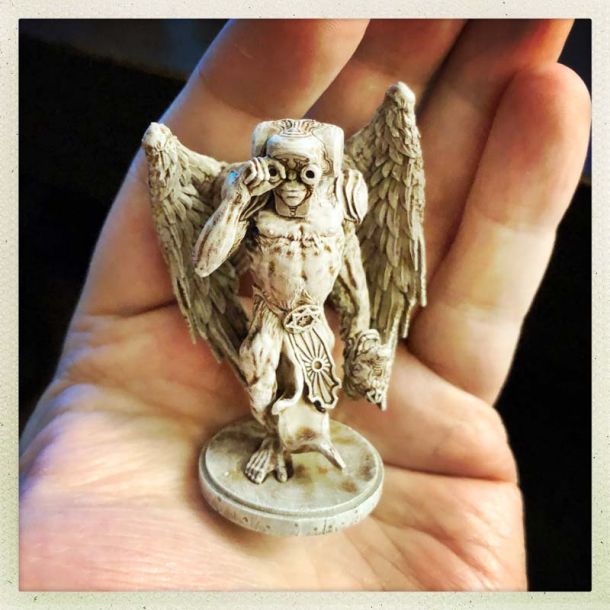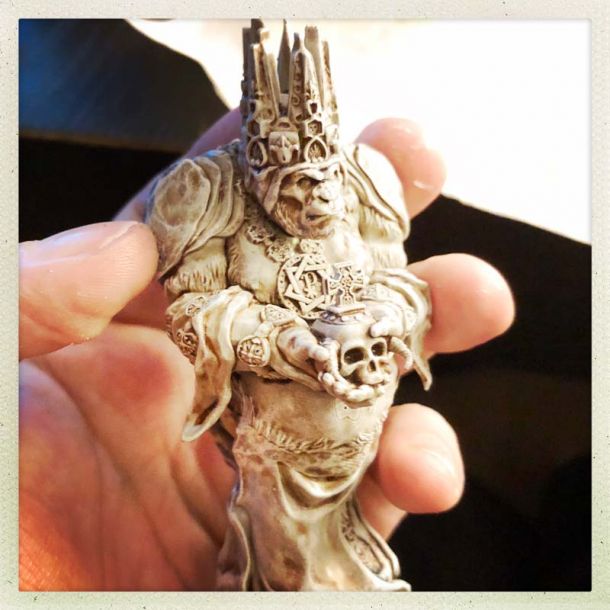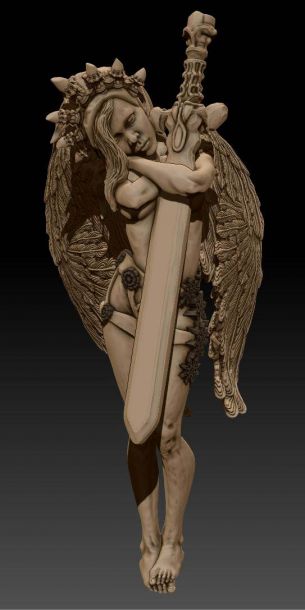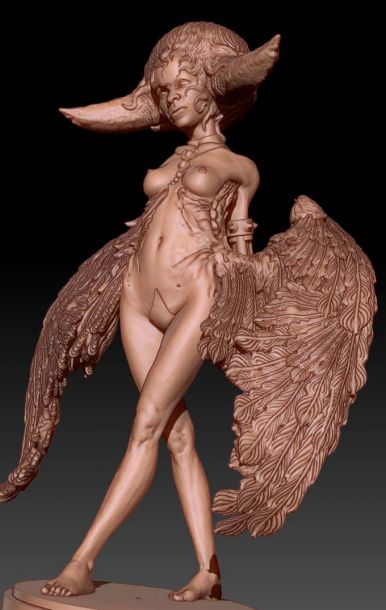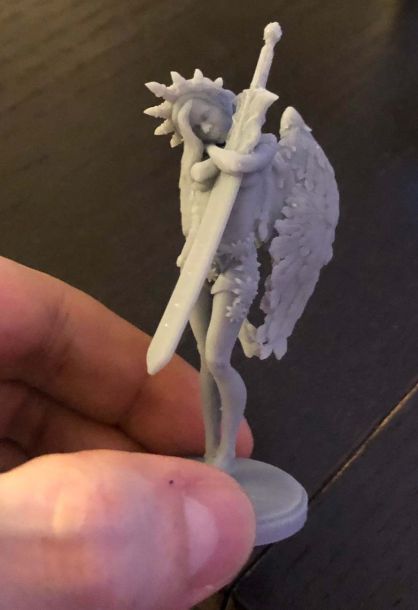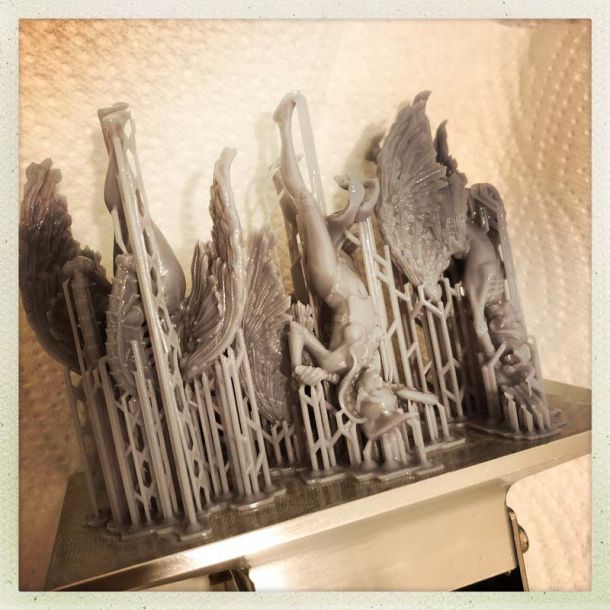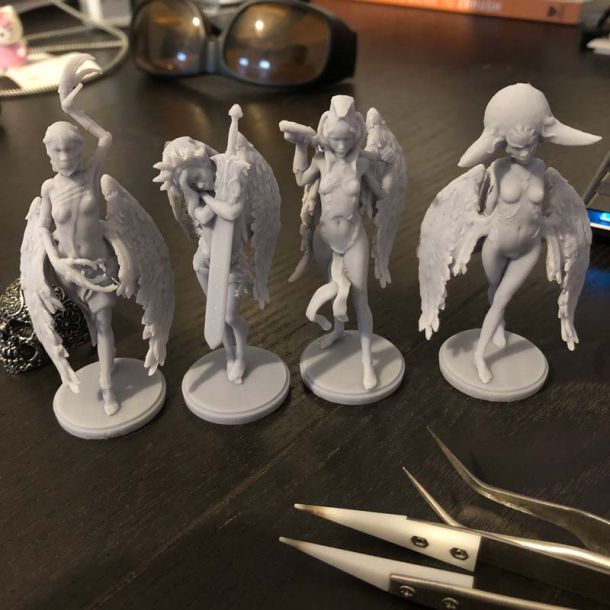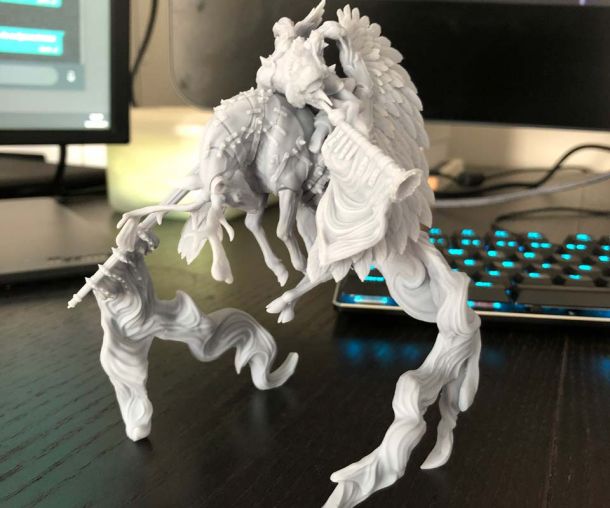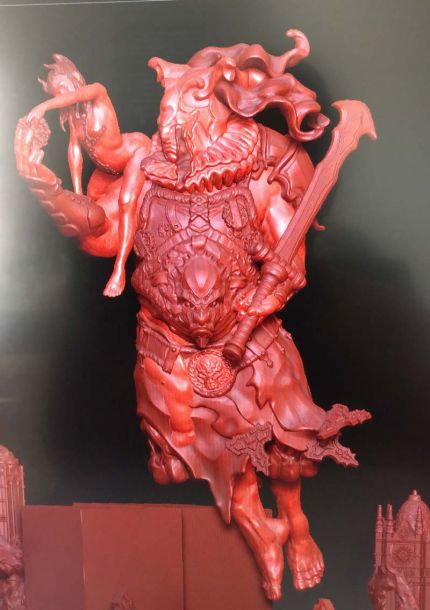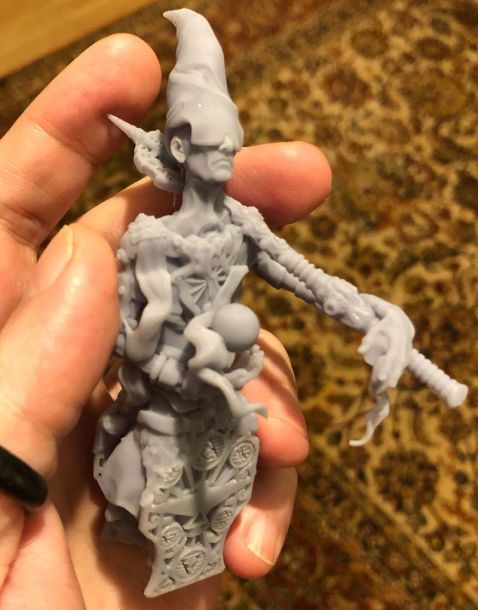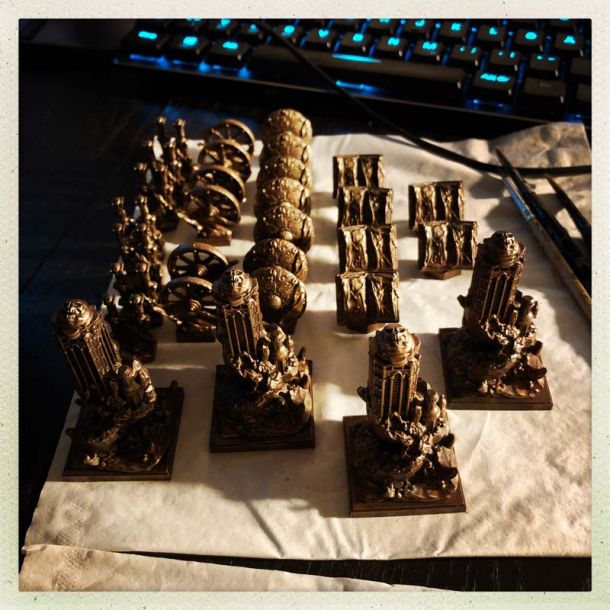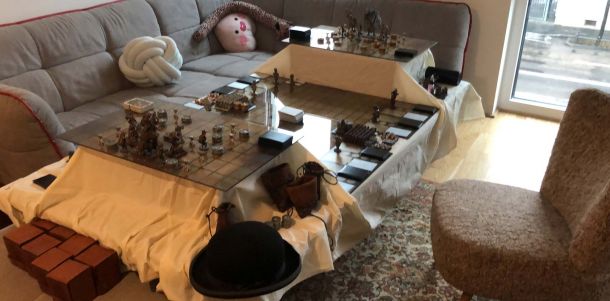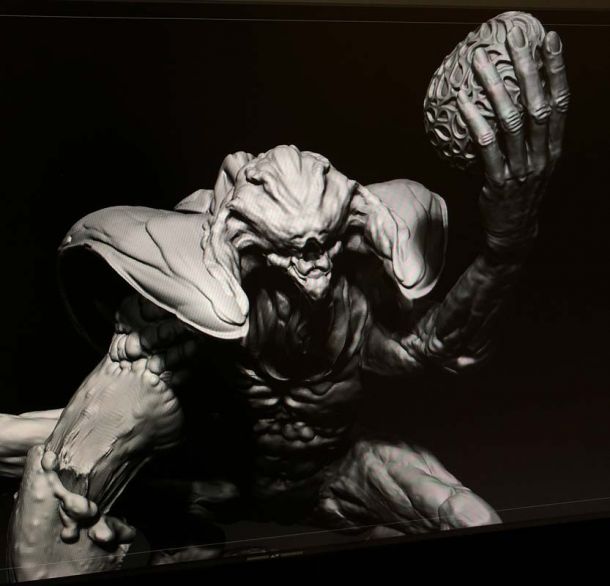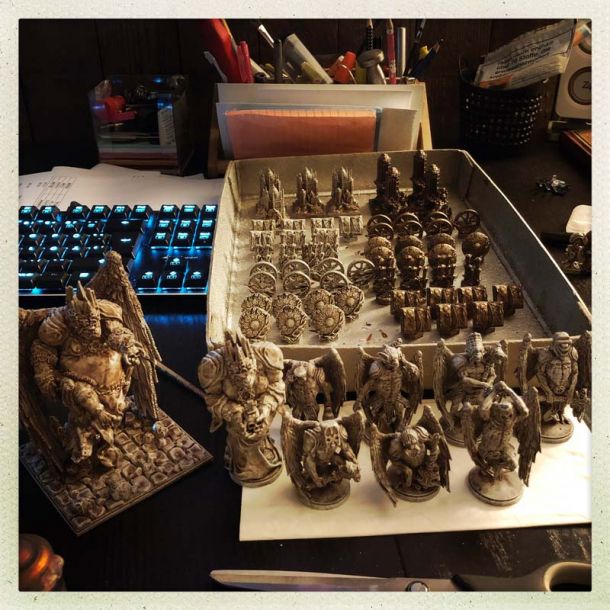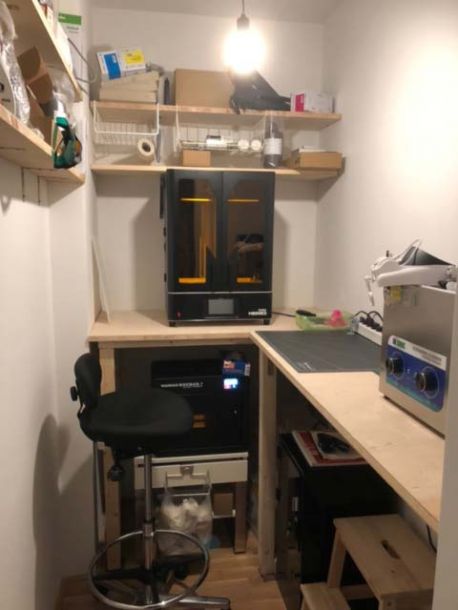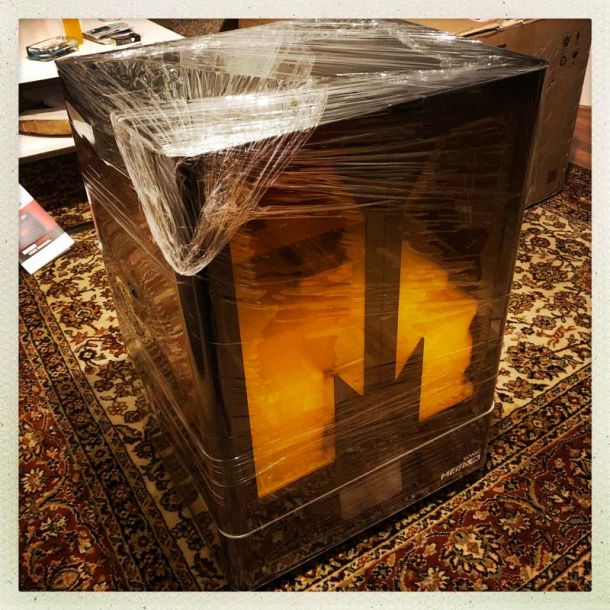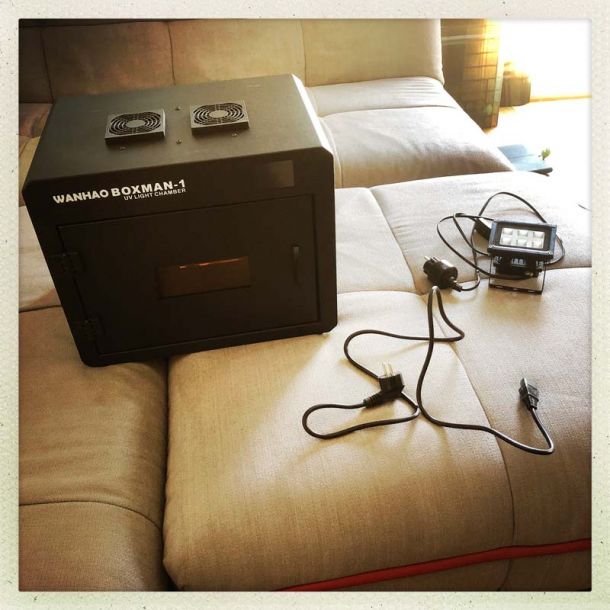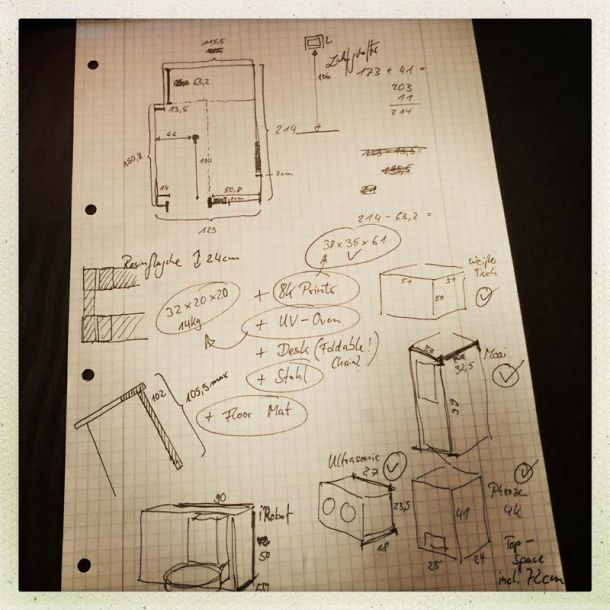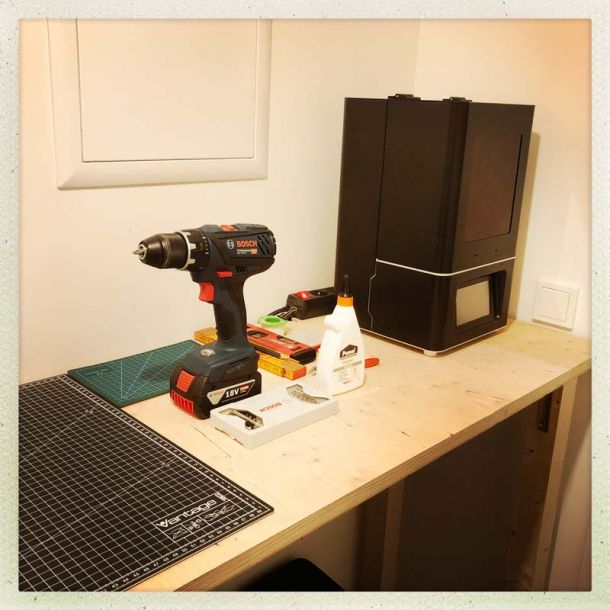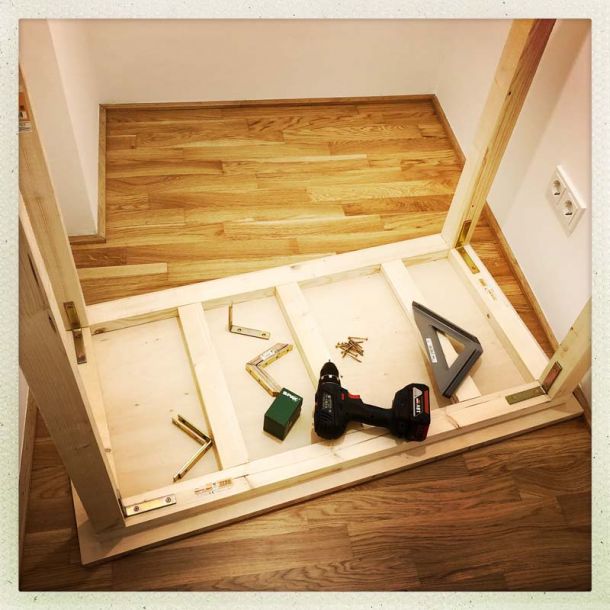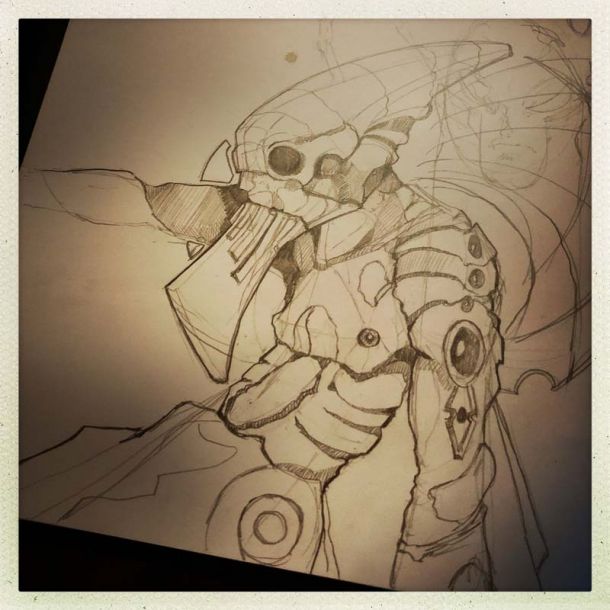
Don't be afraid
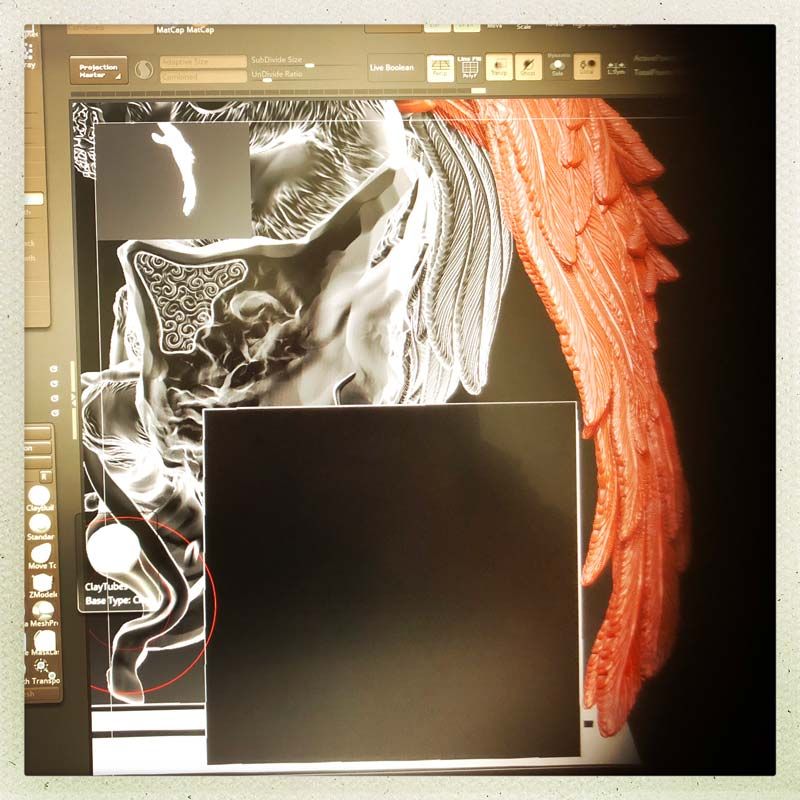
THIS is the most important picture of the whole year!
This picture shows what i had to deal with:
The box (the rectangular black void) is a placeholder for 9 human miniatures standing on a certain area. The Monster miniatures have to be built around those boxes. Each and every one of them. There are also boxes for temples and coins. My life was dominated for 3 years by those boxes. This was the only way to eliminate all 16 bases on which the monsters where standing.
After i managed to do this, no monster needs space on the board anymore. A hard fought victory. Needed only 3 years of hard work.
THE YEAR 2021
A major bump in the road
I am writing this at the end of the year 2023. The last 3 years have been very turbulent and I didn't have the time (or priority) to write an update every month. This is simply due to the fact that I didn't know if I would succeed with my efforts or if the whole game project would fail because of the " flaw " I found in my game at the beginning of 2021.
The way to finding flaws
As I described earlier, I and my gametesters always tested the game from start to finish. I thought there was no point in worrying about the end game until we had a satisfying early and mid game.
How are you supposed to make it to the end game if the player only "suffers" through the early and mid-game to get to the exciting part? This is absolutely not an option and must be avoided at all costs. That's why, right from the start, the focus was placed on the fact that there are important decisions to be made very early on in the game, that there is something to explore and conquer. As a result, the early and mid-game was never boring, sluggish or slow.
What is "good" for the game and what is not?
Of course, all cards are still subject to change and rules for Armageddon Clock cards, artifacts and quests still need to be finalized, but I have found that having many small effects in the game is better received by players than a few large ones.
Cards that affected the whole game and forced the players to play a certain way over a certain period of time were rarely well received. That's why I've increasingly decided to produce lots of cards that contain small effects and don't "last".
In other playtests, there was a "backlog" of actions that had to be carried out. These also had to be eliminated and the future focus had to be placed on streamlining.
The big space problem
As the testing phase slowly shifted into the endgame, however, I noticed a huge problem (for me): it was a logistical problem to place the larger monsters on the playing field. Of course, I hadn't really noticed this problem before, because there was hardly any way to move the big monsters (angels and demons), which take up 4 areas of the board, on a large scale. As we did this more and more during the endgame tests, it became clear that there was "no room" as the board was full of people, minions, temples, citadels, coins and cards.
Each level 3 monster has a base that is sometimes more than 10cm by 10cm. That means I would have had to invent rules to make room for the movement of the huge creatures.
The only thing that would have helped would have been a rule like: "If a level 3 monster moves to an area with a temple, the temple is destroyed" or "If a level 3 monster moves to an area that contains humans, these humans are automatically included in the monster's army." But: What about "friendly temples and citadels"? Are they also destroyed? That makes no sense. Or: What about enemy humans? These cannot be included in the army of a friendly monster. The humans should also be responsible for blocking the way for monsters into the enemy realm as "believers". So this makes no sense either.
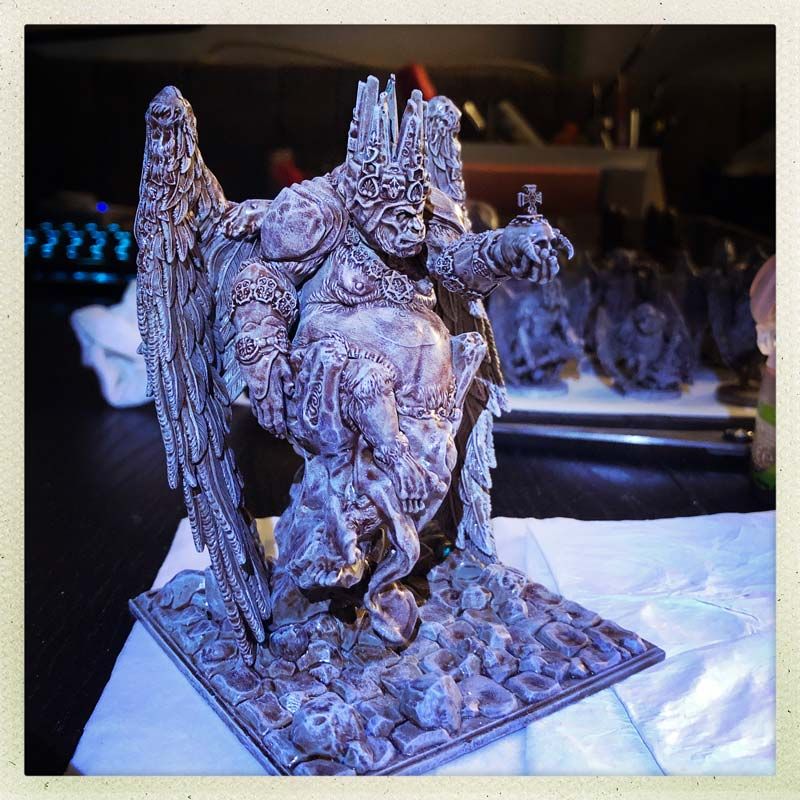
An Ape needs space! Space i don't have!
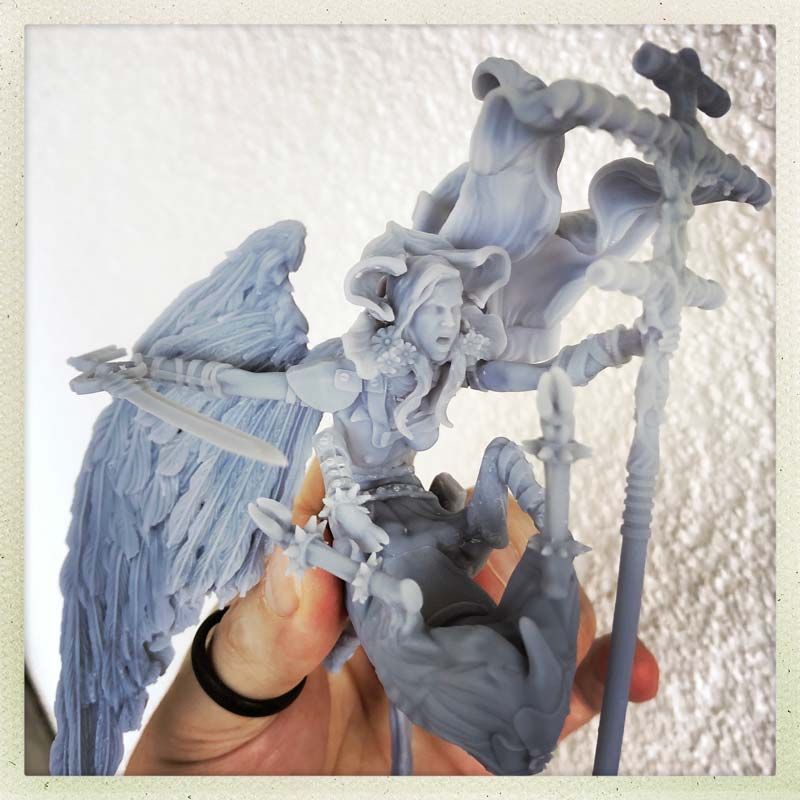
BASE-Less Monsters! Beautyful and totally convenient for the players!
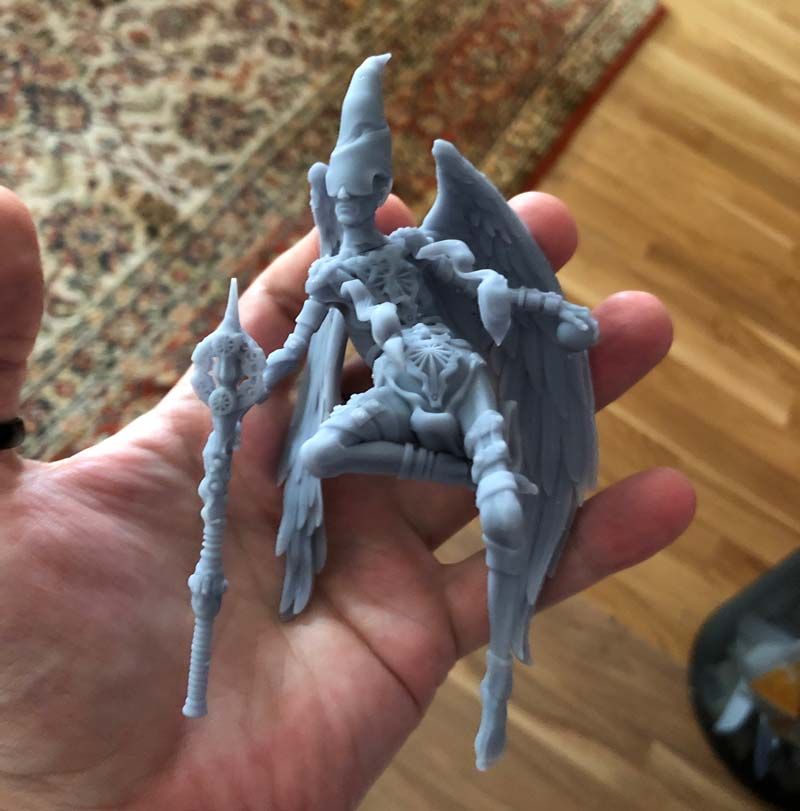
Limitations often give rise to the best ideas!
I found myself in a dilemma.
I would have had to invent nonsensical garbage rules, with dozens of exceptions and "what if's" or come up with something else. But miniatures need a base to stand on. Otherwise they'll fall over. How can there be a miniature without a base? Right? Do miniatures really need a base?
No. They don't need one.
All you have to do is "just" build proxies for all the other things on the battlefield (temples, people, coins) and develop all the monsters around these obstacles! I probably don't need to emphasize that this is an absolutely insane idea, that it requires an immense design effort and that something like this has never been attempted before to my knowledge.
The fact is that this endeavor cost me the next three years. Spoiler alert!
Now, as I write these lines, I have successfully completed this mammoth project and in the following 3 articles of the year 2021 to 23 I will give a little insight into how I did it. I will show some pictures and maybe give some explanations.
my big victory
I now have huge miniatures that no longer take up any space on the playing field. Of course you can ask yourself if this was worth 3 years of work. But I think it was worth it.
I don't want "The Pit" to be just any board game. I want it to be THE board game and redefine what a board game can be in the future.
Moving to another city
I decided to move to another city and work as a creative director near Frankfurt. As a result, I had to set myself up in a new place and also rebuild my workshop.
As the new apartment no longer had 200 square meters, everything had to take place in a very small space. So here's what I did: I rented an apartment that had a small storage room. Then I measured all my devices, built 3D proxies of them and then designed a shelving system that I could have cut to size by a carpentry shop and fit it into the storage room so that all my devices would fit in the space.
I can now fit three 3D printers in the room and I can close the door and not even hear the printers!
Of course, this takes time, which I then don't have for the game. But in the long run, I would miss even more time if I worked in an environment that wasn't tailored to my work needs. So it's better if I get this problem out of the way as early as possible.
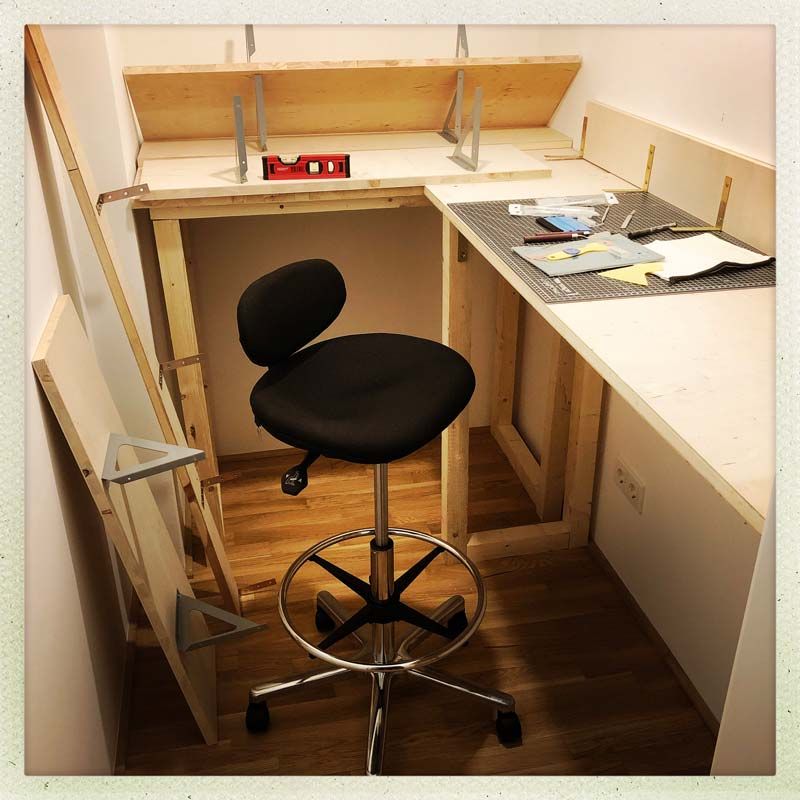
Workshop 06
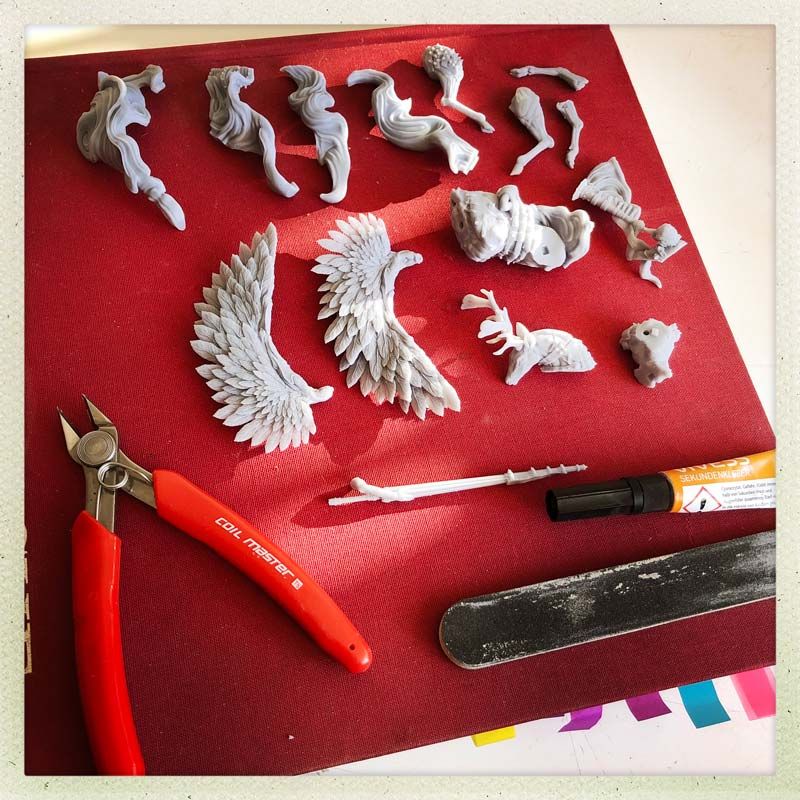
Pieces 01
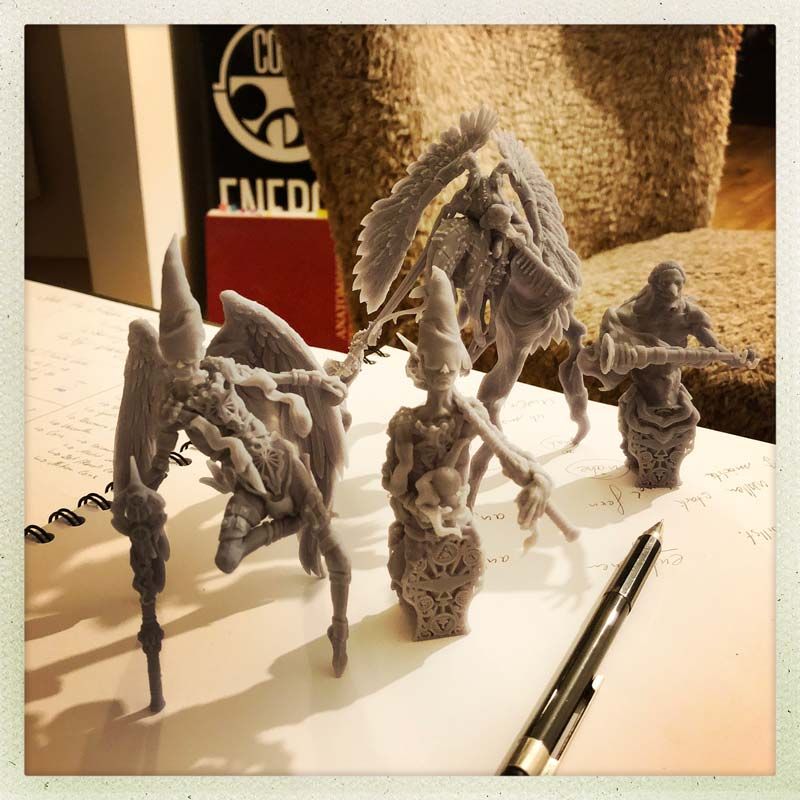
Baselessangel 00
The first tests of the new idea
First I had to create a proof of concept. A miniature that is huge, that doesn't look like it's standing on "stilts", that is attractive and that doesn't take up any space on the playing field and yet doesn't conflict with other, smaller miniatures.
The problem here is not, as initially assumed, the level 3 monsters. As these take up 4 areas and can stand in the middle on a kind of "cross". The real problem is the level 2 monsters, as they occupy 2 areas that are not symmetrical due to the area layout (which was designed to accommodate poker-sized cards). Therefore, these creatures had to be able to cope with this asymmetry and still cause as few problems as possible for other miniatures.
Level 1 monsters that only occupy one area also have this asymmetry problem. So a good solution had to be found for each of the 16 monsters that looks good, is practical and also supports the idea and character traits of the monster. In addition, the design had to create negative space under the miniature.
Therefore, I started with the most difficult miniature: A level 2 angel. This monster should serve as a proof of concept for all other monsters to come.
SORRY FOR NOT PROVIDING MORE
There are some pictures in the gallery that show this process during the first year. I may go into more detail about the process in the future, however I only have 2 weeks to make this new website so I've kept it somewhat brief. I also plan to create a Discord channel in the future where people can ask questions or post some Youtube movies about the design process.
However, this short text is all I can provide at the moment. I apologize for this.
